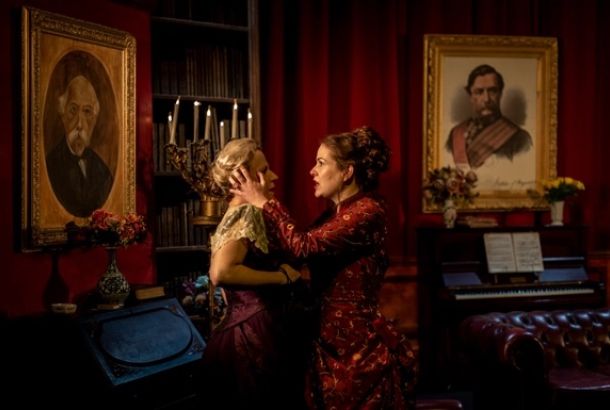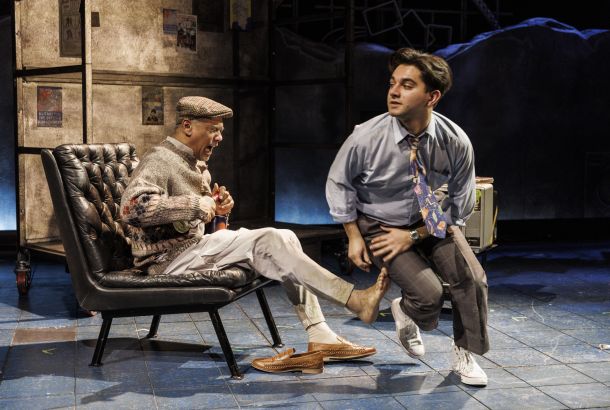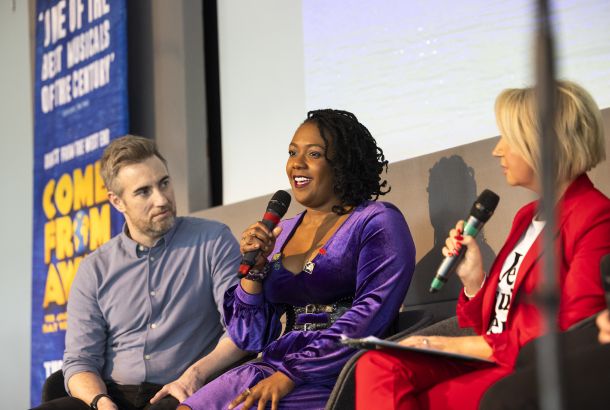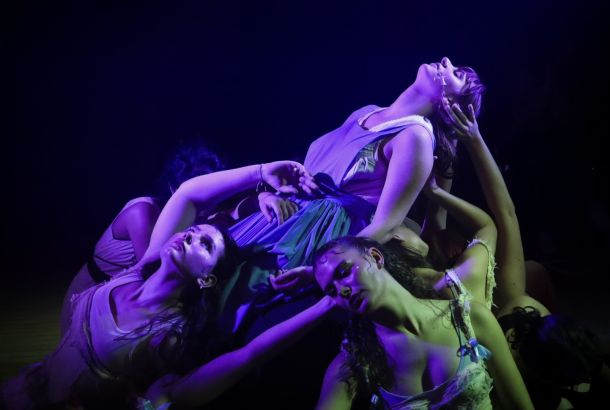
A best-selling novel. An award-willing film. The creatives behind Life of Pi had no easy job adapting it for the stage. Not only because the novel and film are so renowned but because of the great difficulty involved in making a story about a boy trapped on a boat with a Bengal tiger!
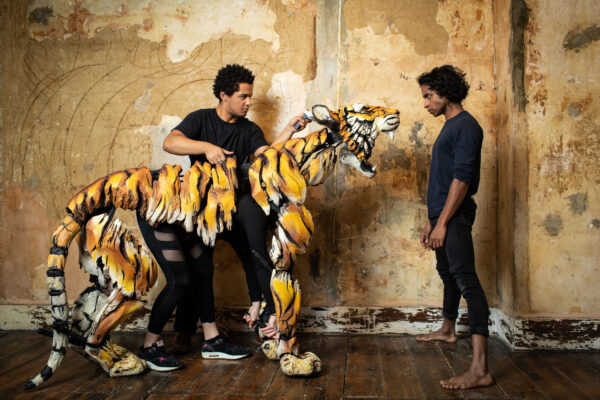
This is not actually the first stage adaptation of Life of Pi – but it’s certainly the most notable. The 2001 novel was first adapted to the stage at the Alhambra Theatre in Bradford in 2003, before touring the UK in 2004 and 2007. It was directed by Keith Robinson, who directed a second version of the play at the Minack Theatre in Cornwall in 2008.
The novel was written by Yann Martel, a Spanish-born French Canadian – and adapted to the big screen by the Taiwanese Ang Lee and to the stage by the British Keith Robinson. Now, at last, this Indian story is being told by an actual Indian: Lolita Chakrabati, a Briton born to Bengali parents from India.
This adaptation premiered at the Crucible Theatre in Sheffield in 2019, before transferring the Wyndham’s Theatre in the West End in November 2021, to critical acclaim and fan frenzy. At the Olivier Awards, it won a whopping 5 Olivier Awards out of 9 nominations: Best Play, Best Actor, Best Supporting Actor, Best Lighting Design, and Best Set Design.
Safe to say, the play is a roaring success!
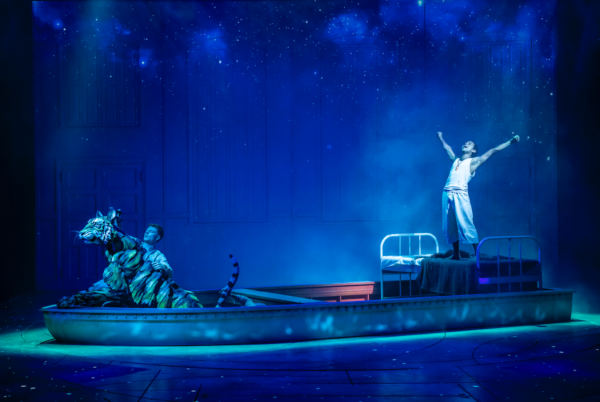
The Cast
Life of Pi stars Hiran Abeysekera (Russell T. Davies’ A Midsummer Night’s Dream, Find Me in Paris) as the title character, but when I went to see the play, Nuwan Hugh Perera (Pi Alternate) was covering. It would have been fantastic to see the actor who won an Olivier for originating the role, but one cannot fault Perrera. His exceptional performance had me in tears.
Abeysekera, along with the rest of the main cast, leaves the production in a few weeks, with Perera taking over the role full-time.
Ma (Pi’s mother) is played by the hugely successful Mina Anwar. Onstage, Anwar is best-known for starring in the original Sheffield Crucible and West End productions of Everybody’s Talking About Jamie (just like Life of Pi). Her extensive screen credits include The Thin Blue Line, The Bill, Doctors and Nurses, Best Friends, Razzledazzle, Coronation Street, The Invisibles, The Sarah Jane Adventures, The Infidel (and its stage adaptation), House of Anubis, The Wright Way, Happy Valley, Rocket’s Island, Scott & Bailey, Remember Me, In the Club, The Worst Witch, and Terms & Conditions – and breathe! Holy cow, that woman has been in a lot.
Raj Ghatak, who usually plays Mamaji and Pandit-ji, was covering the role of Father (usually played by Nicholas Khan). Onstage, he is known for being in the original cast of Andrew Lloyd Webber’s Bombay Dreams, the original off-West End cast of Cinders, and his award-winning role in The Kite Runner.
Habib Nasib Nader plays Cook and the voice of the Tiger. Along with the other actors who play the tiger, he won the Olivier Award for Best Supporting Actor – and, oh, was it deserved, but more on that later… Onscreen, Nader is known for Little Britain, The Golden Compass, and Beehive.

The acting is some of the best you’ll see onstage. Each character is well-written and well-acted – not just the humans, but also the animals (and even the trees)!
With the exception of the crooked Cook, every human character is likeable (even if they do and/or say some questionable things) – but even Cook has clear motives. It’s obvious that the actors have all thought deeply about who their character is and what they represent. They all radiate energy and emotion. They’re not just characters; they’re people.
The mix of Indian and English accents did throw me off a little. This lack of consistency was a little odd. Perhaps it was done intentionally – the production is so meticulously designed, so surely there’s a reason for it – but the lack of clarity renders it a weird creative decision. However, you soon get over the mix of accents, as you are immersed into the action…
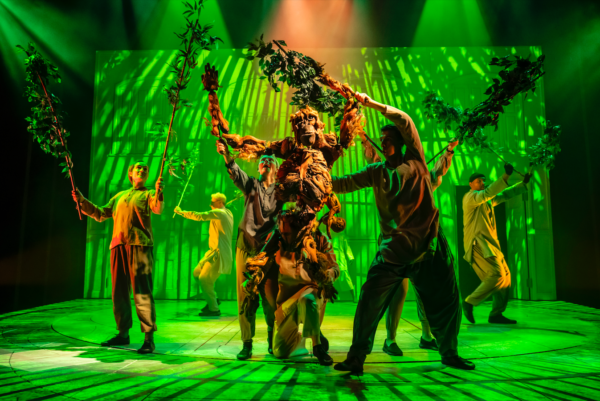
The Story
The play is, of course, set in India (and Mexico and, well, the ocean). The main characters are all Indian. The puppeteers, most of whom are White, wear traditional South Asian clothing. The play, amongst other things, is a celebration of India – whilst also acknowledging some of the sociopolitical problems over there.
Now, I’m not very in touch with my South Asian roots, but this play made me feel proud of my heritage. It was especially touching seeing fellow South Asians in the audience – for theatre audiences remain overwhelmingly White; I’m usually a spec of brown amongst a sea of white.
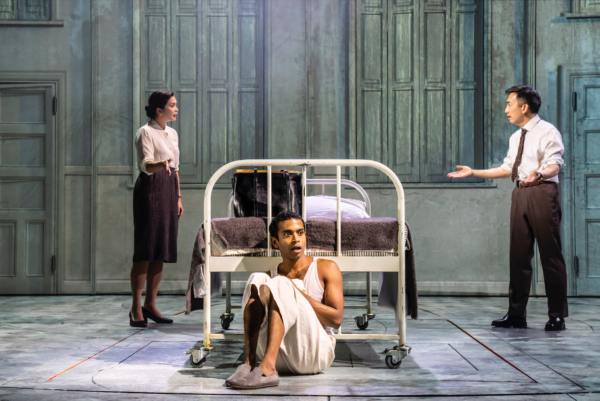
The play begins in the hospital in Mexico where Pi is recovering. It’s a slow, simple beginning to a play with some of the most spectacular staging you’ll ever see in a play (hello, it won Best Set Design at the Oliviers!).
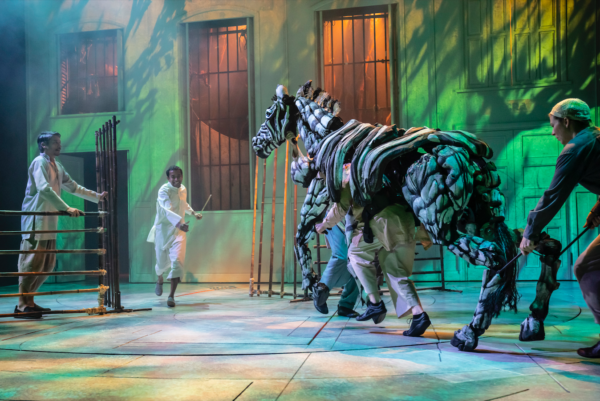
After a short while, as Pi begins his story, we are transported to the zoo where he grew up. The simple set breaks apart, creating something truly splendid, which only gets more elaborate as the play goes on.
In particular, the bazaar (market) scene has sumptuous stage design, with all of the luscious colours and lovely textures.

The bazaar scene offers one of the funniest discussions of religion I’ve ever seen. Three religious leaders (a Hindu, a Muslim and a Christian) each approach Pi in front of his family, inadvertently revealing that Pi has been practicing all three religions! Pi’s family are indifferent to which religion he practices, and whilst his father reminds him that he was raised Hindu (ironic, given his agnosticism), he agrees with his religious wife that Pi must choose one.
The three religious leaders then fight it out, each one criticising (and offending) the other two religions, from Christian “cannibalism”, to Hindu cow worship, to countless Muslim wives! Each religious leader exposes illogicality in the other religions, in turn, revealing illogicality in their own. At its core, the scene exposes the insanity of tearing ourselves apart over religion – part of the play’s attempt to address the historical and cultural context of post-partition India.
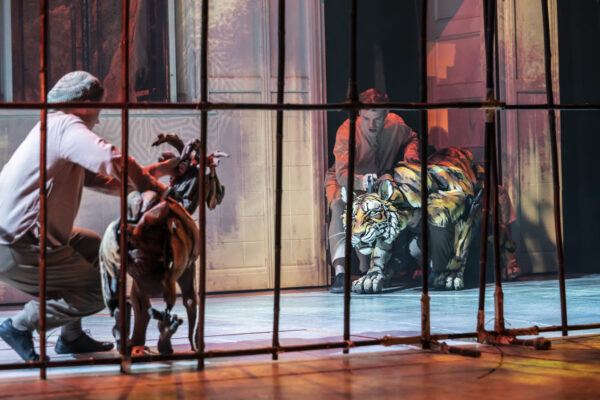
However, the play does not remain a comedy – though it certainly remains comedic (especially the scene in the second act where the Tiger starts talking). The arrival of the Bengal tiger is daunting, and Pi’s Father’s sacrifice of the goat to teach his irresponsible kids a lesson about the dangers of wild animals is especially distressing. Sadly, the darkness does not end there – in actuality, that scene is mild in comparison to what is to follow.
The Design
The production’s award-winning lighting design first gets to shine (pardon the pun) when the ship begins sinking. The stage (or, rather, the ship deck) is filled with projected water. It is utterly mesmerising.
When the ship sinks, Pi finds himself on a lifeboat, which is not a prop but part of the stage, itself – the centre of the stage rises up every time the play cuts to Pi being on the lifeboat.
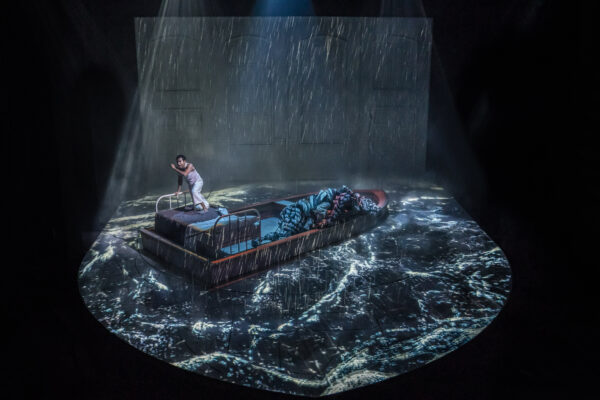
The stage offers more surprises – most noticeably, when Pi jumps off of the boat, to get away from the tiger, and literally falls through the stage. Sadly, I missed this, for the two people sat in front of me were leaning ridiculously forward – but I did see him jump out of the stage at the other side. Those two parts of the stage are made out of soft material that allows people to enter and exit with ease.
This entire scene is a triumph. It sees Pi exerting control over the tiger, as an attempt to save his life. It’s a dramatic scene that will have your heart racing. You want to cover your eyes, but you also don’t want to blink – it’s quite the paradox! When Pi finally forces the tiger to retreat, the audience erupted into applause – as if he had just performed a mind-blowing musical number.

The play often returns to the “now” – the hospital in Mexico – usually after a dramatic moment. It works well to bring the play back down to a normal level; it cuts the drama short, but it’s a smooth transition and allows us to return to the boat at a later date without sudden time jumps.
The scenes in the hospital add context and explanation to what happened in the past. They’re far tamer than the the flashback scenes, but they keep the audience wanting more.
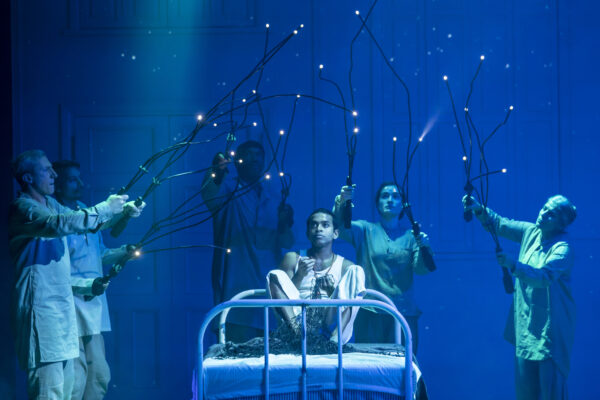
The most impressive part of the play is the puppetry. The six actors who play the tiger won the Olivier for Best Supporting Actor – unorthodox but extremely well-deserved. The tiger – all of the animals, for that matter – is so lifelike, not only in design but also movement. You begin to stop noticing the three actors controlling the puppet; it’s as if there’s really a tiger onstage.
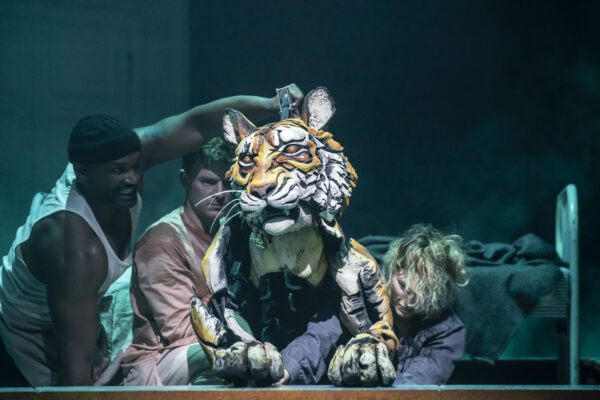
The tiger’s puppetry is especially impressive at the end of the first act, when the tiger makes his way on to Pi’s boat, whilst Pi is busy attempting to scare the hyena. The tiger creeps up behind Pi, in a clever use of dramatic irony that had the entire audience on edge. As Pi turned around, the tiger leaped over him – before a cut to black.
The Twist
Although I’ve never seen the film – which came out a decade ago this year – I seemed to remember hearing about a twist. Indeed, the philosophical novel is known for being an exploration of reality – and how it is perceived and told. Yet, the twist was done in such a way that it was as if I had never known there was one. It has to be one of the greatest twists in the history of fiction. It somehow makes the story even more disturbing. It literally had me in tears, and I find myself tearing up just writing this (and every time I proof-read this, I feel pressure in my eyes – a yearning to cry once again).

You only have to glimpse at my profile to see that I’m a jazz-hands musical kinda boy. Plays are not really my forte. But Life of Pi is not just one of the best plays I’ve ever seen. It’s not even just one of the best pieces of theatre I’ve ever seen. It is, without a doubt, one of the best creations I have ever been fortunate enough to bear witness to.
Life of Pi plays at Wyndham’s Theatre until 14th January, with the new cast (including the promoted Nuwan Hugh Perera) taking over on 7th September.
Note: the production photos in this article feature Abeysekera, not Perera; new images featuring Perera are excepted when he takes over the role.
